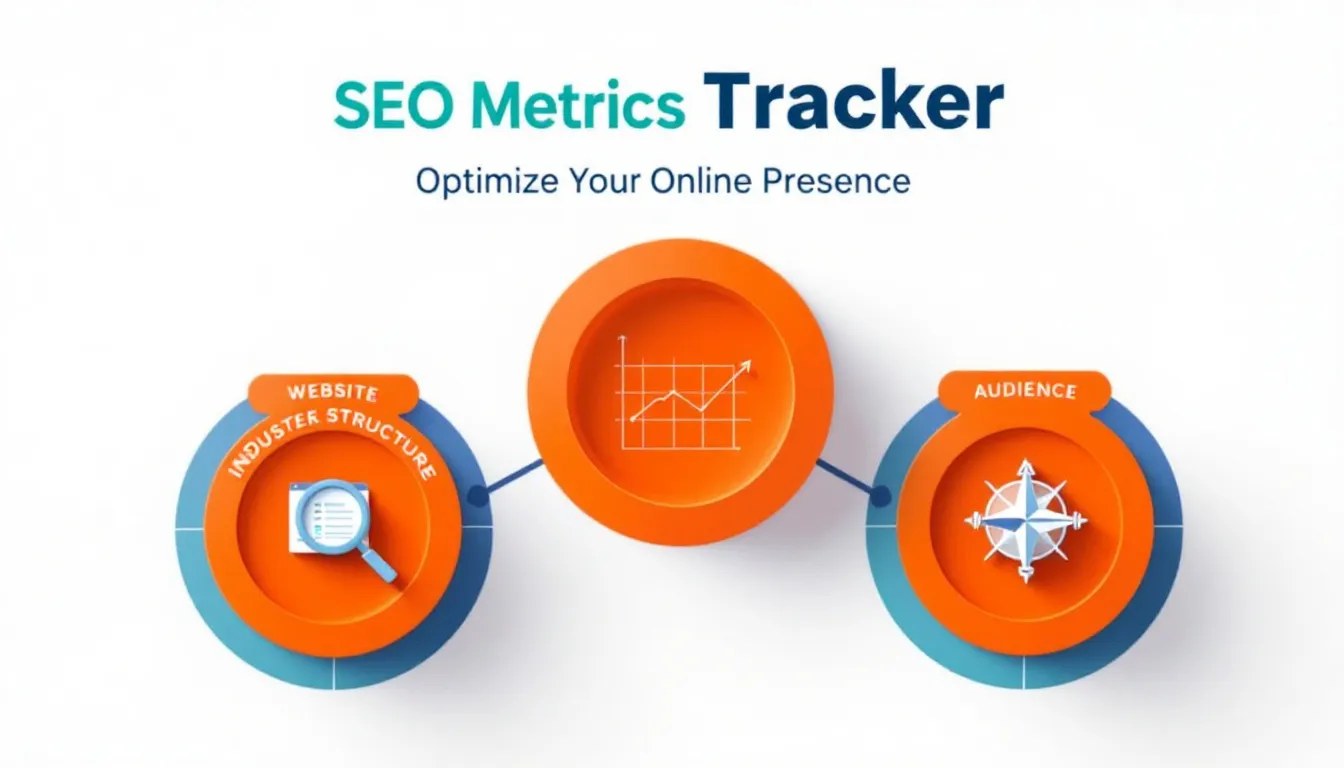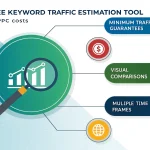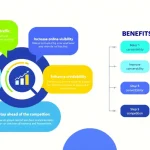Is this tool helpful?
How to Use the SEO Metrics Identification Tool Effectively
Follow these steps to get the most out of the SEO Metrics Identification Tool and identify the key performance indicators tailored to your website:
- Enter Website URL: Provide the full address of your website. For example, https://www.fitnesshub.com or https://www.artisanbakery.co.uk. This lets the tool analyze your site’s SEO attributes.
- Specify Business Type: Choose your industry to get customized metric suggestions. Examples include Health and Wellness or Food and Beverages.
- Define Target Audience: Describe the demographic you want to reach. For instance, young adults interested in home workouts or food lovers seeking artisanal breads.
- Click Identify Key SEO Metrics to receive a personalized analysis and metric recommendations.
Introduction to the SEO Metrics Identification Tool
The SEO Metrics Identification Tool helps you focus on the most important SEO key performance indicators (KPIs) specific to your website, business type, and audience. Instead of tracking countless metrics, it narrows down the data points that have the greatest impact on your search engine optimization strategy.
By analyzing your website’s structure, industry context, and target demographics, this tool delivers clear, actionable recommendations. You’ll save time and resources while better understanding how to improve your site’s search visibility and user engagement.
Key Advantages of Using This Tool
- Focused Insights: Concentrate on the metrics that matter most to your goals.
- Industry-Specific Metrics: Receive tailored KPIs that align with your business field and competitive landscape.
- Audience-Centered Analysis: Understand how your target users interact with your site and which engagement metrics to track.
- Improved SEO Strategy: Make data-driven decisions to optimize your website’s search performance.
Practical Usage of the SEO Metrics Identification Tool
Once you submit your website URL, business type, and target audience, the tool processes this information and provides a set of prioritized SEO metrics tailored to your needs. Here are some practical examples of how different businesses can use the tool’s recommendations:
Example 1: Online Fitness Platform
- Organic Traffic to Workout Program Pages
- Keyword Rankings for Fitness and Wellness Terms
- Conversion Rate for Email Signups From Search Traffic
Example 2: Artisan Bakery Website
- Local Search Visibility and Map Pack Presence
- Engagement Time on Product and Recipe Pages
- Keyword Rankings for Specialty Breads and Pastries
Example 3: SaaS Business Offering Analytics Tools
- Lead Generation from Organic Landing Pages
- Technical Page Load Speeds Influencing SEO
- Ranking for Industry-Specific Terms Like “Data Visualization Software”
Core Areas Analyzed by the Tool
This tool evaluates your website from three main perspectives to identify meaningful SEO metrics:
- Website Structure and Technical SEO: Factors like site speed, mobile-friendliness, and URL architecture.
- Industry-Specific Metrics: Customized KPIs based on your business sector and competition.
- Audience Engagement Metrics: User behavior such as time on site, bounce rate, and conversion actions.
Addressing Common SEO Tracking Challenges
Avoiding Metric Overload
Many websites track too many KPIs, which creates confusion and slows decision-making. This tool limits your focus to the most impactful metrics so you can act decisively.
Ensuring Industry Relevance
Each industry demands different tracking priorities. For example:
- E-commerce: Conversion rates, product page SEO, and cart abandonment metrics.
- Content Publishing: Engagement time, social shares, and backlink quality.
- Local Businesses: Local search rankings, Google My Business insights, and customer reviews.
Advanced Strategies for Metric Implementation
Temporal Pattern Tracking
Track your key SEO metrics over time using these intervals:
- Daily Monitoring for critical issues such as site errors or traffic drops.
- Weekly Analysis to identify emerging trends and content performance.
- Monthly Reviews to align SEO activities with broader business goals.
Competitive Benchmarking
Use your SEO metrics to compare your performance against competitors:
- Assess your search rankings relative to industry leaders.
- Identify content gaps and keyword opportunities.
- Spot strengths to leverage and weaknesses to improve.
Frequently Asked Questions About SEO Metrics
How often should I check these SEO metrics?
Perform weekly reviews for operational metrics and monthly reviews for strategic metrics. Adjust based on business cycles and marketing initiatives.
Can I include additional custom SEO metrics?
Yes, the tool’s recommendations serve as a baseline. Add any KPIs meaningful for your unique business needs.
How do seasonal trends affect my metric focus?
Modify your tracking to focus on metrics relevant during peak seasons or sales campaigns to better understand performance shifts.
Should startups track different SEO metrics than established companies?
Startups benefit from focusing on growth and market penetration indicators, while established businesses often prioritize retention and customer lifetime value.
Can I integrate these SEO metrics with other marketing KPIs?
Yes. SEO KPIs complement broader marketing metrics for a comprehensive view of your digital marketing effectiveness.
How do I interpret relationships between different SEO metrics?
Look for correlations such as how improved site speed impacts bounce rate or how keyword ranking improvements affect organic conversions. This deeper insight helps refine your SEO tactics.
Best Practices for Implementing SEO Metrics
Documentation and Reporting
Keep thorough records of your SEO metrics including:
- Initial baseline values
- Periodic progress updates
- Any strategic changes made based on the data
- Milestones achieved and lessons learned
Team Alignment
Ensure everyone involved understands:
- Why each metric matters
- Responsibilities around tracking and reporting
- How insights drive actionable improvements
Continuous Improvement Using SEO Metrics
Reviewing and refining your SEO metric strategy keeps your efforts aligned with evolving goals and market changes. Implement a cycle of:
- Quarterly performance evaluation of tracked metrics
- Annual alignment of metrics with strategic objectives
- Regular updates to the tool’s settings based on new insights
- Ongoing learning to optimize SEO results
Important Disclaimer
The calculations, results, and content provided by our tools are not guaranteed to be accurate, complete, or reliable. Users are responsible for verifying and interpreting the results. Our content and tools may contain errors, biases, or inconsistencies. Do not enter personal data, sensitive information, or personally identifiable information in our web forms or tools. Such data entry violates our terms of service and may result in unauthorized disclosure to third parties. We reserve the right to save inputs and outputs from our tools for the purposes of error debugging, bias identification, and performance improvement. External companies providing AI models used in our tools may also save and process data in accordance with their own policies. By using our tools, you consent to this data collection and processing. We reserve the right to limit the usage of our tools based on current usability factors.







